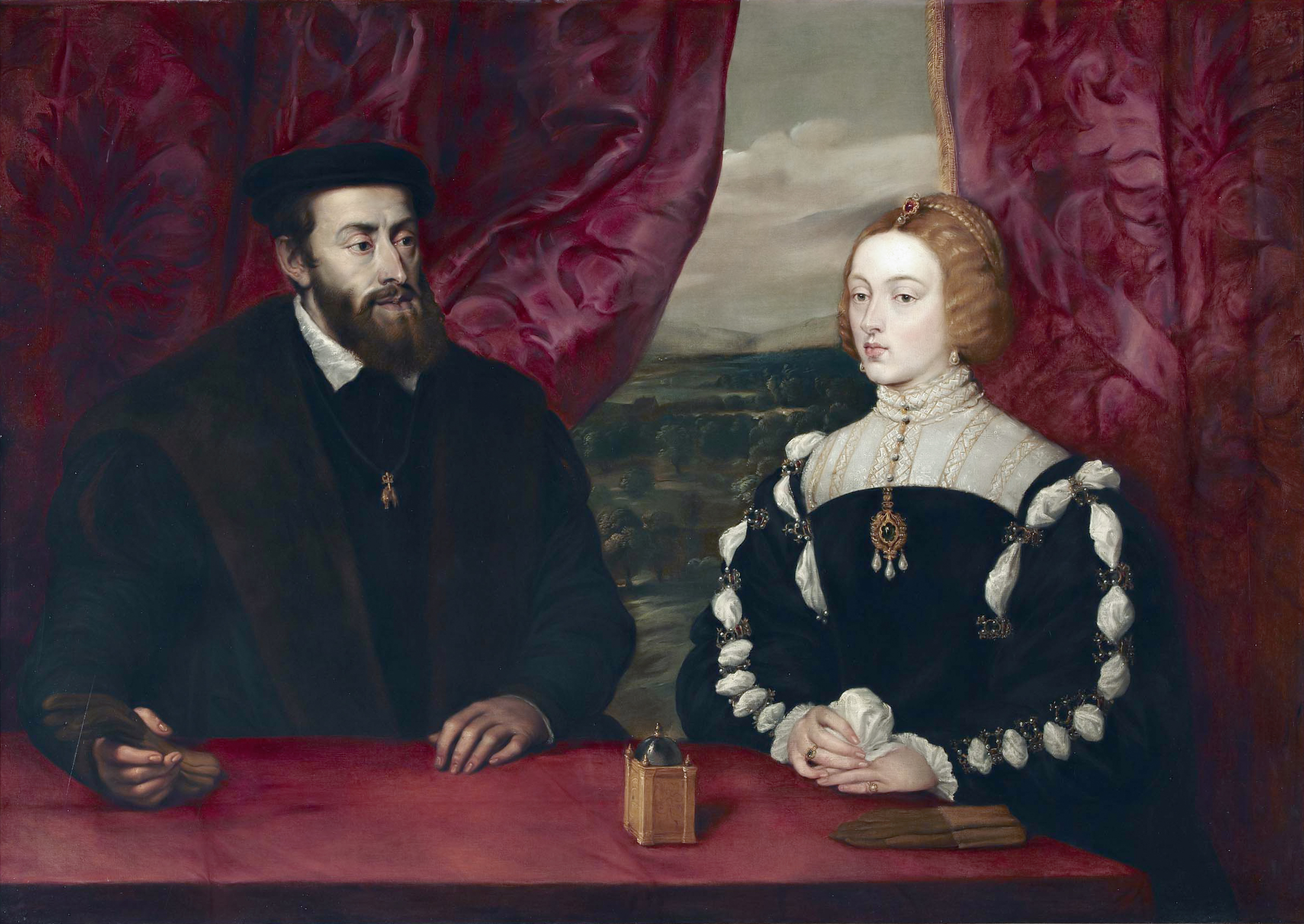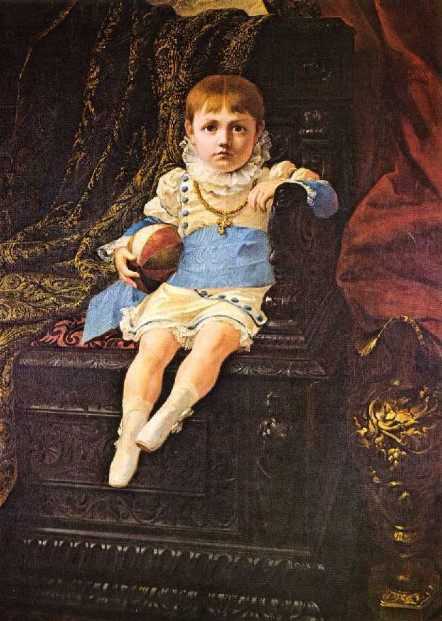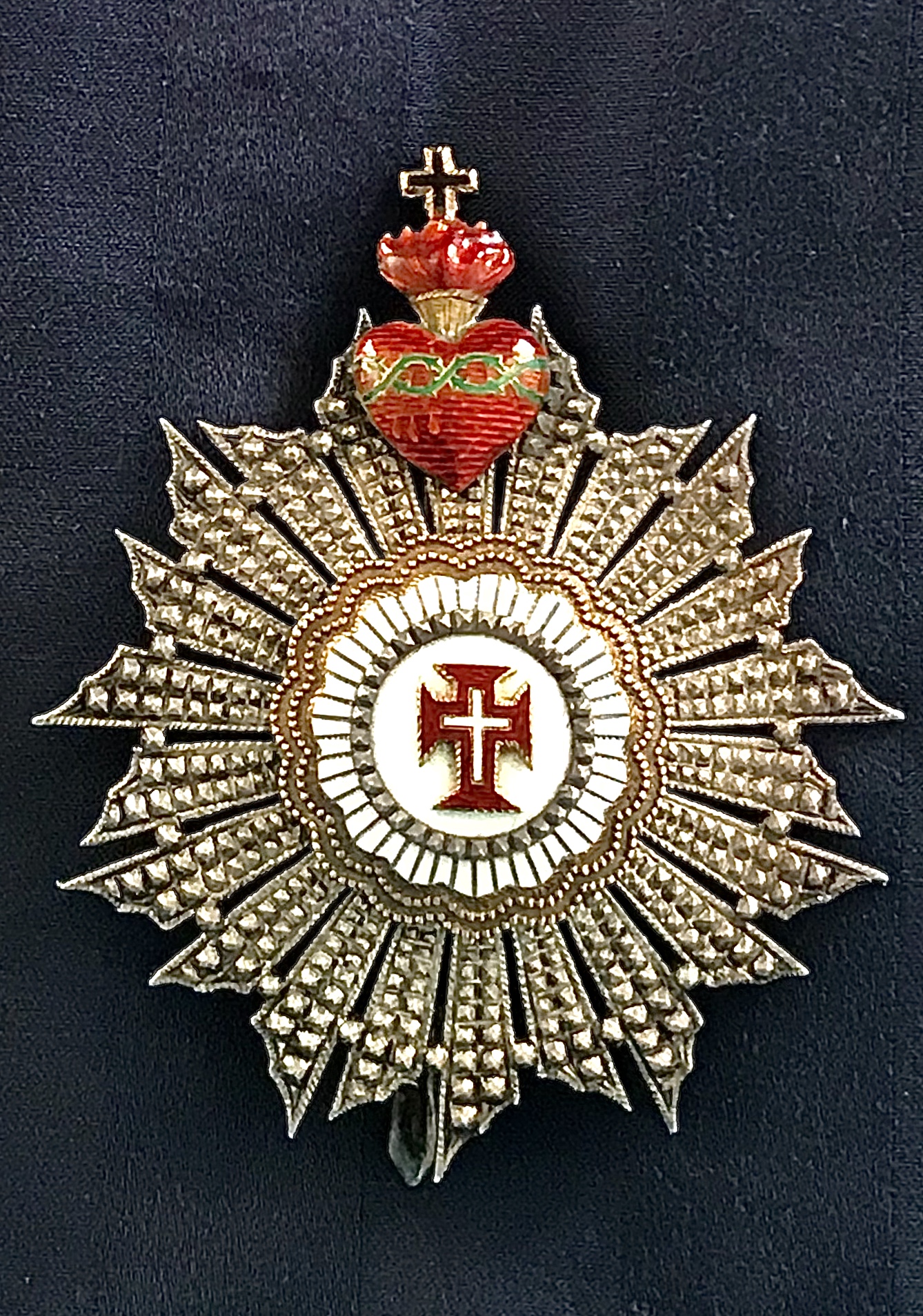|
Infanta Catherine, Duchess Of Braganza
Infanta Catherine of Portugal, Duchess of Braganza by marriage ( pt, Catarina; , 18 January 1540 – 15 November 1614) was a Portuguese ''infanta'' (princess) claimant to the throne following the death of King Henry of Portugal in 1580. Life She was the second daughter of Edward, Duke of Guimarães (sixth son of Manuel I of Portugal) and Isabel of Braganza, she was married to John I, Duke of Braganza, a descendant of earlier Portuguese monarchs, and head of the most important aristocratic House in Portugal. The duchess had several children, of whom Theodosius of Braganza, was her eldest surviving son. When King Henry died (1580), Edward's issue were the only surviving legitimate heirs of any of the sons of King Manuel I of Portugal. As the male line is preferred in Portuguese succession before the female one, descendants of Manuel I's daughters (such as king Philip II of Spain) had, in principle, only a weaker claim to the throne than Edward's descendants, to whom Cathe ... [...More Info...] [...Related Items...] OR: [Wikipedia] [Google] [Baidu] |
House Of Aviz
The House of Aviz (Portuguese language, Portuguese: ''Casa de Avis''), also known as the Joanine Dynasty (''Dinastia Joanina''), was a dynasty of Portuguese people, Portuguese origin which flourished during the Portuguese Renaissance, Renaissance and the period of the Portuguese discoveries, when History of Portugal (1415–1578), Portugal expanded its power globally. The house was founded by King John I of Portugal, Grand-Master of the Order of Aviz and illegitimate son of King Peter I of Portugal, Pedro I (of the Portuguese House of Burgundy), who ascended to the throne after successfully pressing his claim during the 1383–1385 Portuguese interregnum. Aviz monarchs would rule Portugal through the Age of Discovery, establishing Portugal as a global power following the creation of the Portuguese Empire. In 1494, Pope Alexander VI divided the world under the dominion of Portugal and Spain with the Treaty of Tordesillas. The House of Aviz has produced numerous prominent figures i ... [...More Info...] [...Related Items...] OR: [Wikipedia] [Google] [Baidu] |
Isabella Of Portugal
Isabella of Portugal (24 October 1503 – 1 May 1539) was the empress consort and queen consort of her cousin Charles V, Holy Roman Emperor, King of Spain, Archduke of Austria, and Duke of Burgundy. She was Queen of Spain and Germany, and Lady of the Netherlands from 10 March 1526 until her death in 1539, and became Holy Roman Empress and Queen of Italy in February 1530. She was the regent of Spain because of her husband's constant travels through Europe, focusing on the kingdom's policies independent of the Empire and managing the economy. Childhood Isabella was born in Lisbon on 24 October 1503 and named after her maternal grandmother (Isabella I) as well as her maternal aunt, who had been her father's first wife. She was the second child and first daughter of King Manuel I of Portugal and his second wife, Maria of Aragon. Isabella was second-in-line to the throne until the birth of her brother Luis in 1506. Isabella was educated under the supervision of her governess ... [...More Info...] [...Related Items...] OR: [Wikipedia] [Google] [Baidu] |
Archbishop Of Évora
In Christian denominations, an archbishop is a bishop of higher rank or office. In most cases, such as the Catholic Church, there are many archbishops who either have jurisdiction over an ecclesiastical province in addition to their own archdiocese ( with some exceptions), or are otherwise granted a titular archbishopric. In others, such as the Lutheran Church of Sweden and the Church of England, the title is borne by the leader of the denomination. Etymology The word archbishop () comes via the Latin ''archiepiscopus.'' This in turn comes from the Greek , which has as components the etymons -, meaning 'chief', , 'over', and , 'seer'. Early history The earliest appearance of neither the title nor the role can be traced. The title of "metropolitan" was apparently well known by the 4th century, when there are references in the canons of the First Council of Nicæa of 325 and Council of Antioch of 341, though the term seems to be used generally for all higher ranks of bishop, i ... [...More Info...] [...Related Items...] OR: [Wikipedia] [Google] [Baidu] |
Juan Fernandez Pacheco, 5th Duke Of Escalona
Don Juan Fernández Pacheco, (20 December 1563, in Escalona, Spain – 5 May 1615, in Escalona, Spain), 5th Duke of Escalona, 5th Marquis of Villena and 5th Count of Xiquena was a Spanish nobleman and, between 1607 and 1610, viceroy of Sicily. He was the son of Don Francisco Pacheco, 4th Duke of Escalona (1532–1574) and Juana Alvarez de Toledo. In 1589, he was made a knight in the Order of the Golden Fleece. He was Spanish ambassador in Rome between 1603 and 1606, then made viceroy of Sicily between 1607 and 1610. Marriage and children He married in 1594 with Serafina de Bragança (1566-1604), daughter of John I, 6th Duke of Braganza. They had 10 children, seven of whom reached adulthood: # Diego Antonio (1594–1616), died in captivity in Istanbul. # Felipe Juan Baltasar (1596–1633), 6th Duke of Escalona. # Diego Roque (1599–1653), 7th Duke of Escalona. # Cecilia (1603–1622) # Juan Francisco (1606–1663), Bishop of Cuenca, Bishop of Cordoba A bishop is an orda ... [...More Info...] [...Related Items...] OR: [Wikipedia] [Google] [Baidu] |
Philip IV Of Spain
Philip IV ( es, Felipe, pt, Filipe; 8 April 160517 September 1665), also called the Planet King (Spanish: ''Rey Planeta''), was King of Spain from 1621 to his death and (as Philip III) King of Portugal from 1621 to 1640. Philip is remembered for his patronage of the arts, including such artists as Diego Velázquez, and his rule over Spain during the Thirty Years' War. By the time of his death, the Spanish Empire had reached approximately 12.2 million square kilometers (4.7 million square miles) in area but in other aspects was in decline, a process to which Philip contributed with his inability to achieve successful domestic and military reform. Personal life Philip IV was born in the Royal Palace of Valladolid, and was the eldest son of Philip III of Spain, Philip III and his wife, Margaret of Austria (1584–1611), Margaret of Austria. In 1615, at the age of 10, Philip was married to 13-year-old Elisabeth of France (1602–1644), Elisabeth of France. Although the ... [...More Info...] [...Related Items...] OR: [Wikipedia] [Google] [Baidu] |
John IV Of Portugal
John IV ( pt, João, ; 19 March 1604 – 6 November 1656), nicknamed John the Restorer ( pt, João, o Restaurador), was the King of Portugal whose reign, lasting from 1640 until his death, began the Portuguese restoration of independence from Habsburg Spanish rule. His accession established the House of Braganza on the Portuguese throne, and marked the end of the 60-year-old Iberian Union by which Portugal and Spain shared the same monarch. Before becoming king, he was John II, 8th Duke of Braganza. He was the grandson of Catherine, Duchess of Braganza, a claimant to the crown during the Portuguese succession crisis of 1580. On the eve of his death in 1656, the Portuguese Empire was at its territorial zenith, spanning the globe. Early life John IV was born at Vila Viçosa and succeeded his father Teodósio II as Duke of Braganza when the latter died insane in 1630. He married Luisa de Guzmán (1613–66), eldest daughter of Juan Manuel Pérez de Guzmán, 8th Duke of Medin ... [...More Info...] [...Related Items...] OR: [Wikipedia] [Google] [Baidu] |
Battle Of Alcântara (1580)
The Battle of Alcântara took place on 25 August 1580, near the brook of Alcântara, in the vicinity of Lisbon, Portugal, and was a victory of the Habsburg King Philip II over the other pretender to the Portuguese throne, Dom António, Prior of Crato. Background In Portugal, the death of King Sebastian of Portugal in 1578, with only an elderly childless great uncle to succeed him, plunged the country into a succession crisis. King Philip II of Spain was one of seven who laid claim to the Portuguese throne, and in June 1580 a Spanish army of about 40,000 men (about half of which were German and Italian mercenaries) invaded Portugal, under the command of Don Fernando Álvarez de Toledo, Duke of Alba. Two years earlier, the Portuguese army had been decimated at the Battle of Ksar El Kebir (1578), causing the death and imprisonment of tens of thousands of Portuguese soldiers and nobles. Dom António also lacked support from what was left of the Portuguese nobility and high clergy, w ... [...More Info...] [...Related Items...] OR: [Wikipedia] [Google] [Baidu] |
Personal Union
A personal union is the combination of two or more states that have the same monarch while their boundaries, laws, and interests remain distinct. A real union, by contrast, would involve the constituent states being to some extent interlinked, such as by sharing some limited governmental institutions. Unlike the personal union, in a federation and a unitary state, a central (federal) government spanning all member states exists, with the degree of self-governance distinguishing the two. The ruler in a personal union does not need to be a hereditary monarch. The term was coined by German jurist Johann Stephan Pütter, introducing it into ''Elementa iuris publici germanici'' (Elements of German Public Law) of 1760. Personal unions can arise for several reasons, such as: * inheritance through a dynastic union, e.g. Louis X of France inherited France from his father and Navarre from his mother * decolonization, ex-colonies install the monarch of the former colonizing power as ... [...More Info...] [...Related Items...] OR: [Wikipedia] [Google] [Baidu] |
Diego, Prince Of Asturias
Diego, Prince of Asturias and Portugal (Diego Felix; 15 August 1575 – 21 November 1582) was the fourth son of Philip II of Spain and his third son by his fourth wife, Anna of Austria. Early life At the time of his birth, Diego's elder brother, Prince Ferdinand, was still the heir-apparent. On the death Ferdinand in 1578, Diego became heir-apparent to the throne. Diego also had another elder brother, Carlos Lorenzo, who died in infancy. His mother had just learned of the death of Carlos Lorenzo, and she was said to have suffered such a shock from word of his death that it caused her to go into premature labour, giving birth to Diego. He was formally invested as Prince of Asturias on 1 March 1580 by the Courts in Madrid. The poet Cristóbal de Virués dedicated a sonnet to the new Prince, where he proposed that Diego follow the steps of his father.Freiherr von Münch: ''Book for Latin and English literature'', Ferd. Dümmler, 1860, p.159. In 1580, his father became King ... [...More Info...] [...Related Items...] OR: [Wikipedia] [Google] [Baidu] |
India
India, officially the Republic of India (Hindi: ), is a country in South Asia. It is the seventh-largest country by area, the second-most populous country, and the most populous democracy in the world. Bounded by the Indian Ocean on the south, the Arabian Sea on the southwest, and the Bay of Bengal on the southeast, it shares land borders with Pakistan to the west; China, Nepal, and Bhutan to the north; and Bangladesh and Myanmar to the east. In the Indian Ocean, India is in the vicinity of Sri Lanka and the Maldives; its Andaman and Nicobar Islands share a maritime border with Thailand, Myanmar, and Indonesia. Modern humans arrived on the Indian subcontinent from Africa no later than 55,000 years ago., "Y-Chromosome and Mt-DNA data support the colonization of South Asia by modern humans originating in Africa. ... Coalescence dates for most non-European populations average to between 73–55 ka.", "Modern human beings—''Homo sapiens''—originated in Africa. Then, int ... [...More Info...] [...Related Items...] OR: [Wikipedia] [Google] [Baidu] |
Order Of Christ (Brazil)
The Imperial Order of Our Lord Jesus Christ ( pt, Imperial Ordem de Nosso Senhor Jesus Cristo), simply named Order of Christ, is an order of chivalry instituted by emperor Pedro I of Brazil on 7 December 1822, on the basis of the Portuguese Order of Christ founded by King Dom Dinis and Pope John XXII in 1316–1319. The order was used to award persons for exceptional services that resulted in notable and proven utility to religion (Roman Catholicism), to humanity and the state. Knights of the Order of Christ were part of the untitled nobility of the Empire of Brazil. On 22 March 1890, the order was cancelled as national order by the interim government of United States of Brazil. However, since the deposition in 1889 of the last Brazilian monarch, Emperor Pedro II, the order is claimed as a house order, being awarded by the heads of the House of Orleans-Braganza, pretenders to the defunct throne of Brazil. The current Brazilian Imperial Family is split into two branches, ... [...More Info...] [...Related Items...] OR: [Wikipedia] [Google] [Baidu] |
Brazil
Brazil ( pt, Brasil; ), officially the Federative Republic of Brazil (Portuguese: ), is the largest country in both South America and Latin America. At and with over 217 million people, Brazil is the world's fifth-largest country by area and the seventh most populous. Its capital is Brasília, and its most populous city is São Paulo. The federation is composed of the union of the 26 States of Brazil, states and the Federal District (Brazil), Federal District. It is the largest country to have Portuguese language, Portuguese as an List of territorial entities where Portuguese is an official language, official language and the only one in the Americas; one of the most Multiculturalism, multicultural and ethnically diverse nations, due to over a century of mass Immigration to Brazil, immigration from around the world; and the most populous Catholic Church by country, Roman Catholic-majority country. Bounded by the Atlantic Ocean on the east, Brazil has a Coastline of Brazi ... [...More Info...] [...Related Items...] OR: [Wikipedia] [Google] [Baidu] |
.png)






